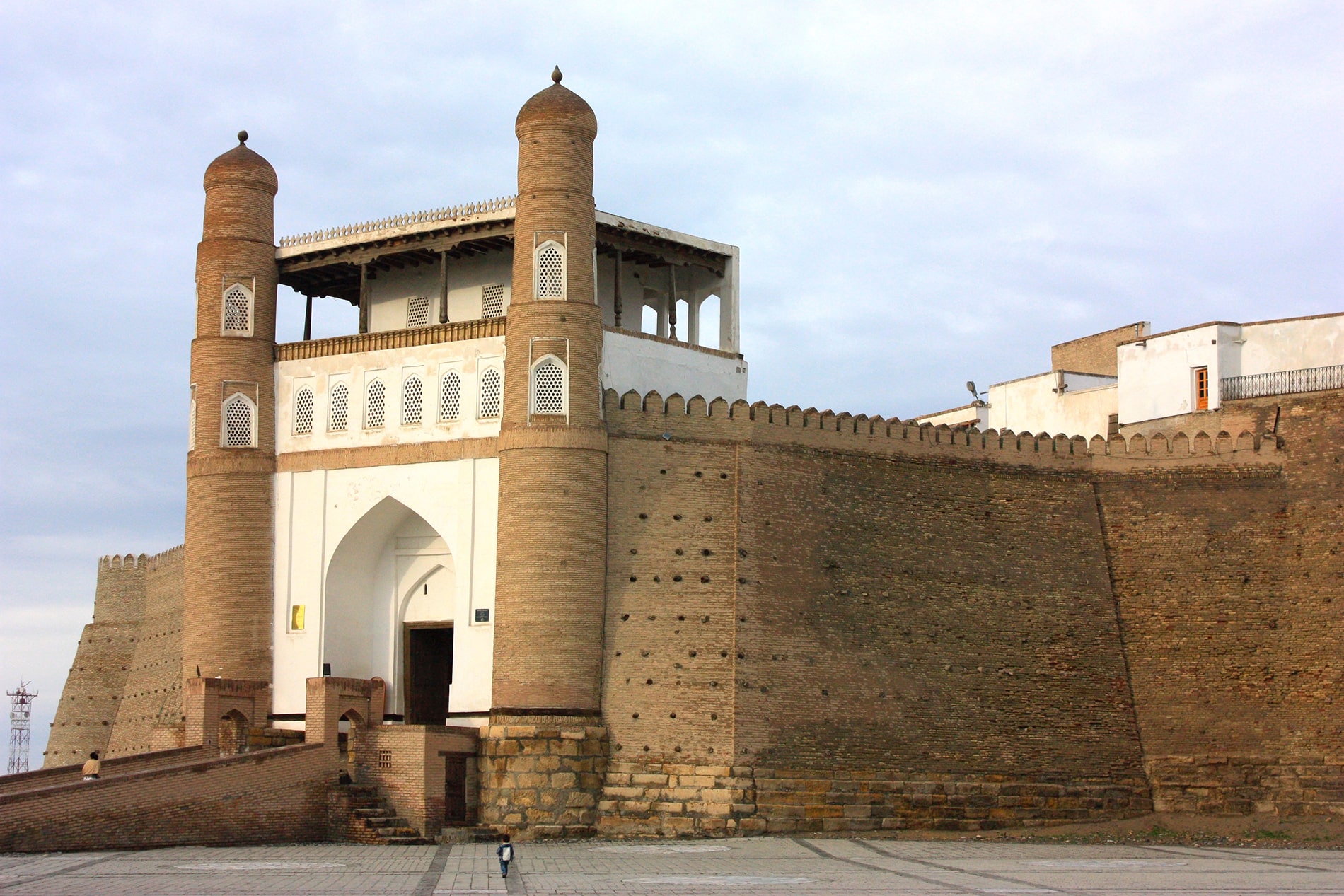Ark Citadel(In Bukhara)
The Ark Citadel is the oldest architectural monument in the city. Until 1920, this castle was the main residence of the rulers of Bukhara. It covers an area of 3.9 hectares. According to archaeological excavations, the establishment of the castle can be traced back to the 4th to 3rd centuries BC. The castle was built on a 6 - meter - high artificial hill.
The construction layout shows that the Ark is a closed polygonal structure built from west to east. The surviving castle walls are about 16 - 20 meters high and about 789 meters long.
The steep slopes of the ancient Ark were surrounded by huge accumulations of clay; later they were replaced by adobe bricks. The foundations and towers of the castle were built with fired bricks. Throughout its long history, the Ark has experienced multiple constructions and destructions, and has been in ruins for many years. The castle was rebuilt under the rule of the local ruler Bukharkhudat in the 7th century.
During the Samanid period, that is, the 9th to 10th centuries, the castle was rebuilt and strengthened, including walls, towers, and various residential buildings.
In the 16th century, under the rule of the Shaybanid dynasty, the Ark took on its modern shape. The castle had two gates - the East Gate Guriyan and the West Gate Registan. The Guriyan Gate was destroyed in the second half of the 16th century. The Registan Gate from the 19th century has been preserved to this day.
The remaining buildings in the castle belong to the Ashtarkhanid (17th century) and Manghit (18th to 20th centuries) dynasties. These include the kurinishkhona, audience hall, throne hall (18th century), Friday Mosque (18th century), Qushbegi bolo, prime minister's courtyard (19th to 20th centuries), Salomkhona, greeting hall (19th to 20th centuries), and sayiskhona, stables (19th to 20th centuries).
In the early 20th century, the Ark itself was the city. It was the palace of the ruler, the offices of the high authorities and military officials, the workshops of craftsmen, the storage rooms, the armory, the residences of the courtiers and their relatives, as well as the storage rooms for clothes, carpets, weapons, and the palace treasures. About 3,000 people lived in this castle.




































